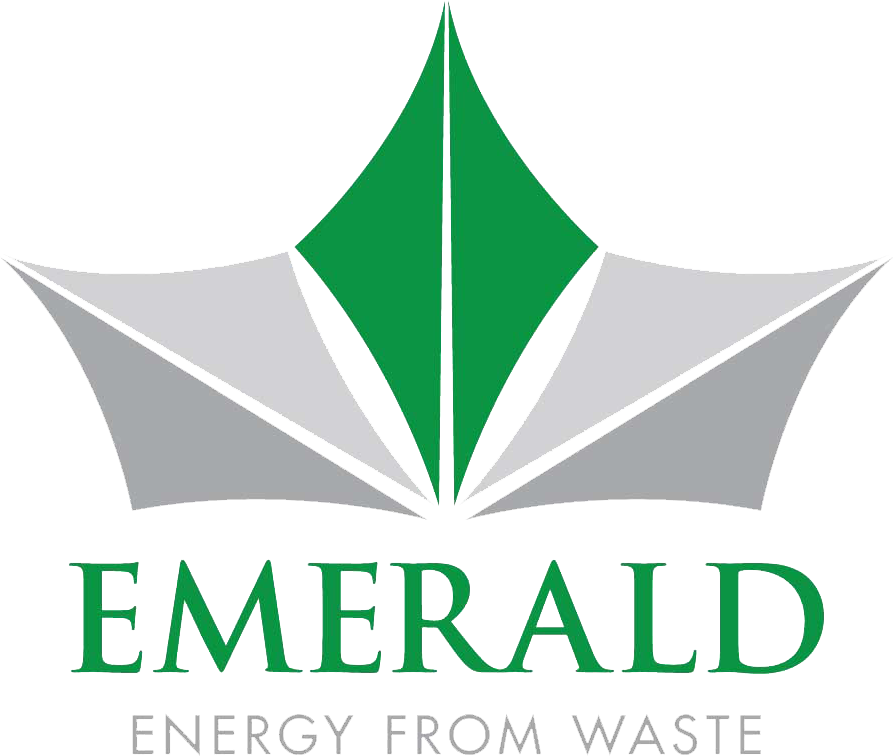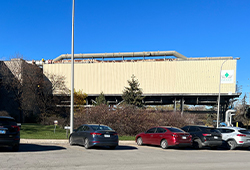Redevelopment Project
Days until ontario landfills are full
Day(s)
:
Hour(s)
:
Minute(s)
:
Second(s)
Ontario’s Waste Disposal Crisis
Presently, the approved landfill capacity in Ontario is projected to reach its limit within the next 9 to 13 years. As population growth continues, there is an escalating strain on our existing waste management infrastructure, a trend expected to persist. Specifically, the ‘More Homes, Built Faster’ program in Ontario aims to accommodate an additional 1.5 million homes, equivalent to approximately 3.75 million people, within the province over the next decade. Despite efforts to increase waste diversion, the production of residual waste in Ontario is anticipated to rise, necessitating careful management. Without proactive measures, an escalating portion of Ontario’s residual waste may be directed to the United States for disposal, a course of action deemed unsustainable.

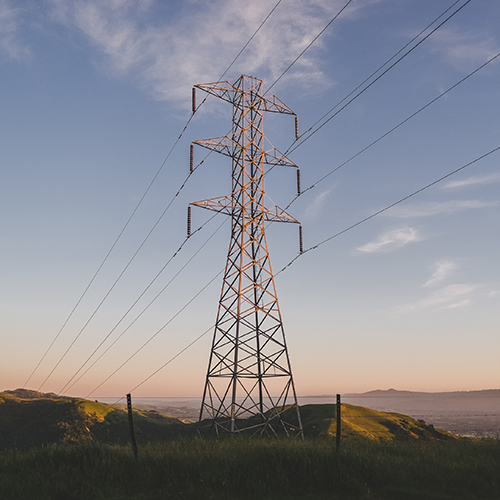
Ontario’s Energy Challenge
In the foreseeable future, the Independent Electricity Systems Operator (IESO) anticipates a scenario characterized by reduced domestic electricity generating capacity and an upsurge in electricity demand. This shift will largely result from the planned retirement of the Pickering nuclear plant in 2026, which currently provides 2,100 MW of generating capacity to Ontario. Moreover, the persistently growing population in urban areas and industrial corridors, particularly within the Greater Toronto Area (GTA) and southwestern Ontario, will contribute to escalating electricity requirements. Additionally, as electric vehicles and various electric-powered transportation systems, such as buses and trains, become more prevalent, the demand for electricity is expected to further intensify. Therefore, to meet these increasing energy needs, the GTA region would significantly benefit from the establishment of increased local power generation capabilities.
Redevelopment Project
Emerald is embarking on a strategic redevelopment initiative aimed at integrating cutting-edge, highly efficient technology into our site. Ultimately, this endeavour is poised to significantly elevate our processing capacity, potentially processing up to 2,500 tonnes of waste per day, and concurrently boosting energy recovery to a maximum of 100 MW. Crucially, this redevelopment project remains firmly rooted in the original purpose of the facility: the recovery of energy from non-hazardous waste and benefiting our local community.
The redevelopment will be executed through a meticulously planned three-phase approach.
Phase 1 – The existing facility will remain operational while the first processing line is constructed
Phases 2 and 3 – will be implemented and commissioned in accordance with market demands, culminating in the eventual retirement of the existing facility.
Furthermore, this redevelopment initiative positions Emerald to not only expand our current array of energy offerings but also pioneer innovative ones, including steam, hydrogen, district heating, and electricity. In conclusion, this strategic evolution underscores our steadfast commitment to sustainable energy solutions and our unwavering dedication to the community we serve.
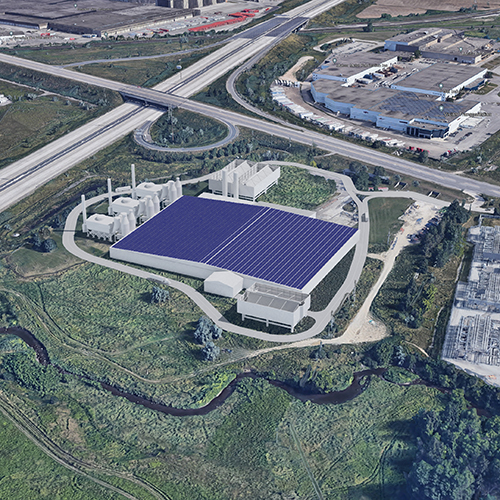


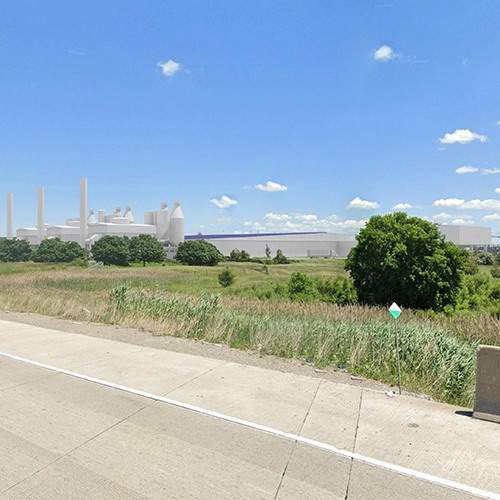
FAQs about the Redevelopment Project at Emerald
What is the purpose of the Redevelopment Project at Emerald Energy from Waste?
In short, The Redevelopment Project aims to install modern, more efficient technology to increase processing capacity and energy recovery, aligning with Emerald's mission to recover energy from non-hazardous waste for the local community.
How will the redevelopment impact processing capacity and energy recovery?
Ultimately, the project will increase processing capacity to up to 2,500 tonnes per day and energy recovery to up to 100 MW, significantly enhancing the facility's capabilities.
What are the key phases of the redevelopment project?
Phase 1 involves constructing the first processing line while the existing facility remains operational. While, Phases 2 and 3 will be implemented based on market demand, and the existing facility will be removed.
How will the existing facility be affected during the redevelopment phases?
During Phase 1, the existing facility will remain operational. Then, in Phases 2 and 3, it will be replaced to accommodate the new, more efficient technology.
What types of energy will be produced after the redevelopment?
As a result, the redevelopment will enable Emerald to produce a range of energy products including steam, hydrogen, district heating, and electricity, providing versatile and sustainable energy options.
How will the redevelopment project benefit the local community?
Specifically, the project will enhance Emerald's capacity to recover energy from waste, providing the local community with a more robust and sustainable energy source.
What market demand considerations are being taken into account for Phases 2 and 3?
To emphasize, Phases 2 and 3 of the redevelopment project will be installed and commissioned in response to market demand, ensuring that the expansion aligns with the needs of the community and industry.
How will the redevelopment project contribute to environmental sustainability?
By increasing energy recovery and processing efficiency, the project will further reduce the environmental impact of waste management activities, helping to create a more sustainable and circular economy.
Will the redevelopment project require additional regulatory approvals?
All in all, Emerald will adhere to all necessary regulatory requirements and obtain any required approvals to ensure that the redevelopment project meets industry standards and environmental regulations.
What is the expected timeline for completing the entire redevelopment project?
At this point, the timeline for completing the entire redevelopment project will be determined based on the progress of each phase and market demand. Ultimately, Emerald is committed to executing the project efficiently and effectively.
Why is an Environmental Assessment (EA) being conducted, and under which legislative framework?
Our study is being conducted under the Environmental Assessment Act (EAA), utilizing its broad definition of the environment. Specifically, the purpose is to evaluate the potential positive or negative impacts of our proposal on the environment and determine actions to eliminate or mitigate any adverse effects.
How was the community involved in the Environmental Assessment process for the redevelopment proposal?
Altogether, our EAA process involved several steps, including three Open Houses held in November 2022, January 2023, and July 2023, with a fourth scheduled for December 11th. For this purpose, these events, advertised in the local paper, provided the community with an opportunity to voice concerns, ask questions, and interact with us and EAA study experts.
How are emissions currently managed, and what measures are in place for the proposed facility?
Our facility has real-time monitoring programs reporting emissions quarterly and annually to the Ministry of the Environment Conservation and Parks (MECP). Our engineers projected emissions for the new facility using advanced emission control technologies, complying with provincial air quality standards. Furthermore, continuous monitoring ensures compliance and community health protection.
Is the assertion that energy recovery has higher carbon emissions valid, and how does the new facility address this concern?
Our carbon emission monitoring program indicates that about half of our emissions come from non-contributing biogenic sources. Moreover, modernizing energy recovery technology is expected to lower carbon emissions per kW-h produced, potentially below those of natural gas plants. Additionally, computer models approved by the MECP confirm compliance with provincial air quality standards.
How does waste management locally benefit the environment, and how does it compare to traditional landfill disposal?
In short, managing waste locally avoids emissions from hauling waste to remote landfills. Converting waste to energy eliminates landfill disposal and associated emissions of methane, carbon dioxide, dust, and odors. Additionally, the energy produced is used locally, reducing the need for non-renewable fuels and benefiting both residents and businesses.
How does the proposed redevelopment align with the principles of a modern waste management system?
To emphasize, we support the Reduce-Reuse-Recycle-Recover-Dispose hierarchy. Our redevelopment, designed in phases, adds capacity in response to the demand for zero-waste services without competing with existing or future waste reduction, reuse, and recycling programs. Therefore, this comprehensive approach contributes to a mature waste management system for the benefit of our communities.
What initiatives are in place for resource recovery and circular economy practices?
Specifically, our redevelopment contributes to a circular economy by producing steam for local paper recycling, converting electricity into hydrogen as a zero-emission fuel, and ensuring that the embodied energy of resources is recovered and reintroduced into the circular economy. Moreover, we believe in maximizing the benefits to the community through innovative and sustainable waste management practices.
